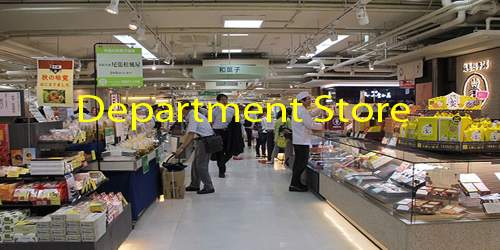The department store is a huge retail store located in the central part of the city. It is divided into small shops or sections, dealing with one or two lines of products and specializing in that line. These products are segregated into categories and categories under the supervision of managers and buyers. There are also departmental divisions of goods, advertising, services, accounting, and budgetary. In modern major cities, department stores made a dramatic appearance in the mid-19th century and consistently defined shopping habits and service and luxury. The same thing is happening in London (with White less), Paris (Le Bon March), and New York (Stuart). This type of huge retail organization, many times, looks like a small township usually owned by a large company because it requires huge capital. Thus, a unit of a sales organization holds a very large size under a department store.
Department stores are often categorized according to the type of product they carry and the price they charge; General categories include discounts, general merchandise, fashion or high fashion, and specialties. Categories vary from store to store but typically include menswear, women wear, children wear, technology, toys, food, household appliances, homeware, shoes, handbags, beauty, accessories, gifts, and much more. Typically, department stores offer different stocks in different brands of products but some also have their own product lines. Additionally, the line includes other products such as food, books, jewelry, electronics, stationery, photographic equipment, baby products, and products for pets. It meets the needs of the more affluent and advanced classes of the people. It places more emphasis on quality and a wider choice of products and other services and comfort. To encourage customers to spend more time in the store, department stores are usually equipped with one or more restaurants and toilets. They can also provide add-value services such as gift-wrapping, personal shopping, price matching, home delivery, and even store credit. Customers usually check-in near the front of the store at discount department stores, higher traditional, department stores include sales counters in each department. Some stores are one of many in the larger retail chain, others are individual retailers.
Harding, Howell & Co. was the first official store in London, opening in 1796. Department stores soon became common throughout the UK and took root abroad as well. The first U.S. department store in New York was Arnold Constable in 1825. In the 1970s, they came under intense pressure from contenders, and since 2010 they have come under even greater pressure from e-commerce sites.
















